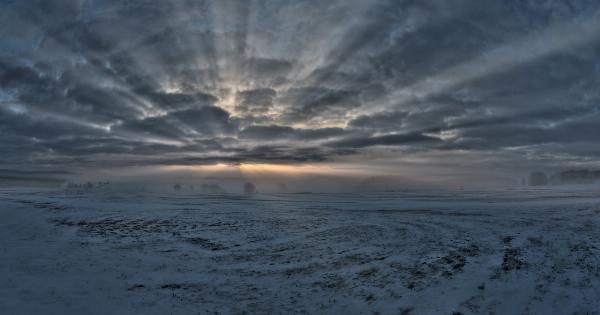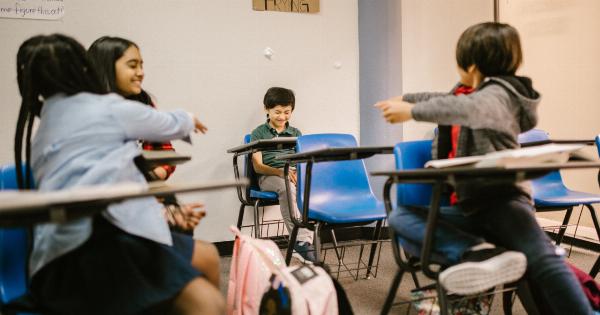The economic downturn that began in the late 2000s had a profound impact on society, and it is only natural that such a significant event would find its way into contemporary literature.
Authors have always been influenced by the world around them, and the economic crisis provided a rich source of material for writers to explore themes of struggle, inequality, and resilience. In this article, we will examine how the economic downturn is depicted in contemporary literature, looking at both fictional works and those based on real-life experiences.
1. The Struggle of the Working Class
One of the most common themes in literature related to the economic downturn is the struggle of the working class.
Many novels and stories revolve around characters who have lost their jobs or are on the verge of losing them, depicting the anxiety, despair, and resilience of these individuals.
Authors such as Jennifer Egan in “A Visit from the Goon Squad” and Jonathan Franzen in “Freedom” provide powerful portrayals of working-class characters navigating the challenges of unemployment, job insecurity, and financial instability.
2. Wealth Disparity and Inequality
The economic downturn brought to the forefront existing wealth disparity and socioeconomic inequalities. Contemporary literature often explores the vast divide between the wealthy elite and the struggling majority.
Novels like “Capital” by John Lanchester delve into the lives of the super-rich and the impact of their actions on society, while books such as “The Sellout” by Paul Beatty examine racial and economic inequalities in a satirical and thought-provoking manner.
3. The Collapse of Institutions
The economic crisis also revealed flaws and vulnerabilities in various institutions, and literature reflects this aspect as well.
Many novels explore the collapse of financial systems, banks, and corporations, shedding light on the ethical and moral failures that contributed to the crisis. For instance, Don DeLillo’s “Cosmopolis” delves into the world of high finance and the arrogance and detachment of those in power.
4. The Ripple Effects on Families and Relationships
The economic downturn had far-reaching effects on families and relationships, and these experiences are often explored in contemporary literature.
Authors like Celeste Ng in “Little Fires Everywhere” and Jodi Picoult in “Sing You Home” depict the strain that economic challenges put on marriages, friendships, and parent-child relationships. These novels examine the emotional toll of financial hardships and the decisions individuals make when faced with difficult circumstances.
5. Stories from the Margins
Contemporary literature also highlights the experiences of marginalized communities during the economic downturn.
Authors like Jesmyn Ward in “Salvage the Bones” and Junot Díaz in “This Is How You Lose Her” explore the impact of the crisis on communities that were already vulnerable, such as low-income neighborhoods and immigrant populations. These stories give voice to those who are often overlooked and provide a nuanced understanding of the diverse effects of the economic downturn.
6. Resilience and Hope
Despite the hardships portrayed in literature related to the economic downturn, there is often an underlying theme of resilience and hope. Many novels depict characters who find ways to survive and rebuild their lives in the face of adversity.
Books like “Station Eleven” by Emily St. John Mandel and “The Road” by Cormac McCarthy demonstrate the strength of the human spirit and the potential for renewal even in the darkest times.
7. Satire and Dark Comedy
In addition to more serious and realistic portrayals, contemporary literature also explores the economic downturn through satire and dark comedy.
Authors like Gary Shteyngart in “Super Sad True Love Story” and Joshua Ferris in “Then We Came to the End” use humor and irony to comment on the absurdity of the financial crisis and its impact on individuals and society.
8. Fictionalizing Real-Life Experiences
Some authors take inspiration from real-life experiences and translate them into fictional narratives. By blending fact and fiction, these works offer a unique perspective on the economic downturn.
For example, “The Big Short” by Michael Lewis and “Too Big to Fail” by Andrew Ross Sorkin present compelling narratives based on real events and characters, allowing readers to gain insights into the complexities of the crisis.
9. Exploring Psychological and Emotional Impact
The economic downturn not only had tangible consequences but also deeply affected the psychological and emotional well-being of individuals.
Contemporary literature delves into the psychological impact of the crisis, depicting characters dealing with stress, anxiety, and a sense of displacement. Novels like “The Corrections” by Jonathan Franzen and “The Lowland” by Jhumpa Lahiri provide nuanced portrayals of the emotional toll that economic hardships can have on individuals and families.
10. The Aftermath and Lessons Learned
Finally, contemporary literature also reflects on the aftermath of the economic downturn and the lessons learned from the crisis.
Authors like Mohsin Hamid in “How to Get Filthy Rich in Rising Asia” and Colson Whitehead in “The Nickel Boys” examine the long-term impact of the economic crisis on individuals and society, offering insights into the changes and transformations that occurred as a result.



























